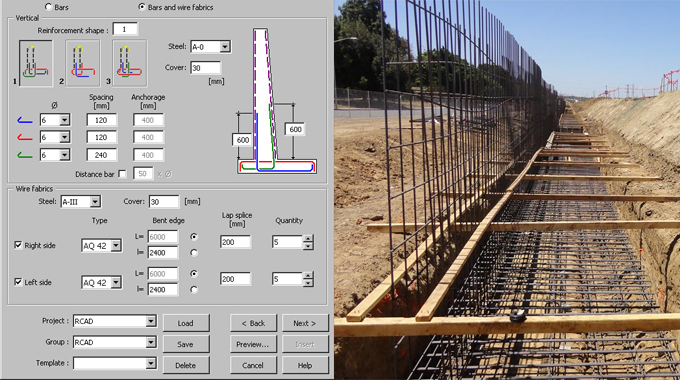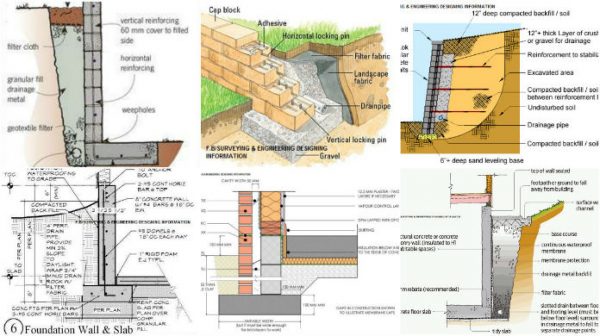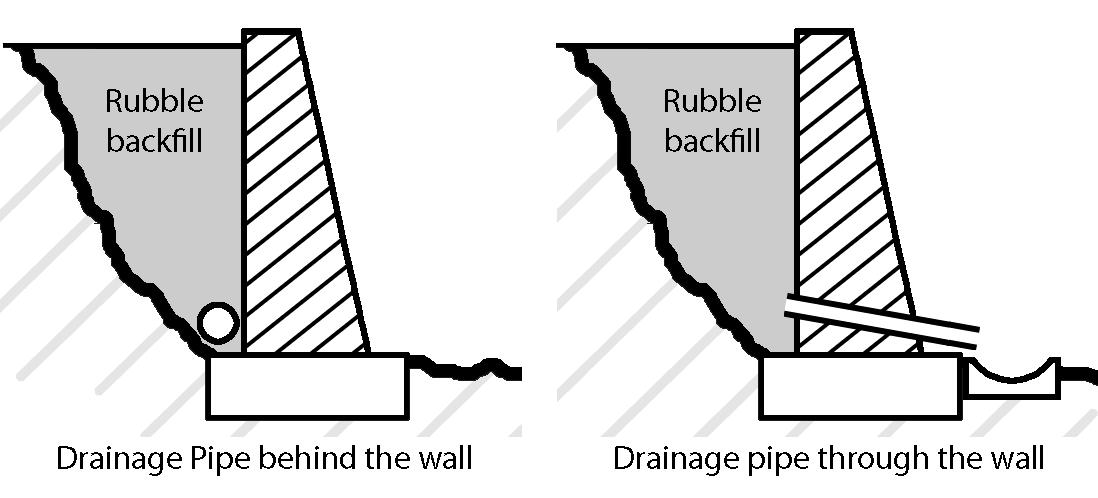The Austin Construction Company PDFs
Table of ContentsAce Construction Company Things To Know Before You Get ThisFascination About Ace Construction CompanyNot known Factual Statements About Ace Construction Company Not known Facts About Ace Construction Company
Because these products can not withstand considerable stress, the style intends at avoiding tension in the wall. Some gravity walls do not utilize mortar, relying solely on their weight to stay in place, as when it comes to dry stone walls. These walls typically are trapezoidal in area as revealed in Fig.2. Gravity walls require heavy structure due to the plus size of the wall. They are cost-effective and appropriate for just small heights (construction company austin). A gravity retaining wall provided with a small amount of reinforcement for minimizing the mass of the concrete is called semi-gravity maintaining wall, as shown in Fig.
3. The lateral earth pressure is primarily resisted by the mass of the wall, as in the case of a gravity retaining wall. These are the enhanced concrete walls in which lateral earth pressure is withstood by structural action of its members. The base of the wall is extended into the backfill on the heel side and is understood as heel piece, as displayed in Fig.
4. The backfill over the heel piece offers significant additional lateral stability to the wall. The back of the wall on the heel side is also provided a slope. This increases the width of the wall with depth, comparable to the increase in lateral earth pressure with depth. The vertical wall (called stem), the heel piece, and the toe piece act as cantilevers repaired at their junction and covering to the other end.
How Construction Company Austin can Save You Time, Stress, and Money.

The heel slab and the toe slab undergo resultant upward soil pressure from the bottom and bend up. Reinforcement is for that reason offered on the stress side, that is, vertically on the backside of the stem and horizontally at the bottom of the heel piece and the toe piece.
Cantilever retaining walls are suitable for maintaining the backfill to moderate heights of 4-7 m. In sample, a lot of cantilevered walls appear like "L" s or inverted "T" s. Where foundation soils are poor, earth tieback maintaining walls are another option. These walls are counterbalanced not just by a big base however likewise by a series of horizontal bars or strips extending out from the vertical surface area into the backfill.
Once an earth tieback retaining wall is backfilled, the weight and friction of the fill against the horizontal members anchors the structure. When the height of a cantilever keeping wall is more than about 7 m, it is affordable to supply a vertical bracing system, understood as counterforts, on the backfill side above the heel piece.
16. 5. The stem and the heel slab act as continuous pieces spanning horizontally along the length of the wall between the counterforts. Making use of counterforts minimizes the bending moment due to earth pressure and for this reason the size and reinforcement of the stem and the heel piece. Counterforts are subjected to tension due to the action of lateral earth pressure of the backfill on the stem.
Not known Details About Ace Construction Company Texas
Figure 16. 6 reveals an upheld maintaining wall. The structural link action of the stem is the same as in a counterfort maintaining wall. However, the heel piece functions as a cantilever slab as in a cantilever keeping wall. The toe piece serves as a constant slab covering along the length of the wall between the buttresses.
ADVERTISEMENTS: Sheet piles are flexible maintaining structures utilized to supply a short-term construction location for construction of structures. Sheet stacks are made of timber, steel, or in some cases reinforced concrete. Lumber sheet stacks were utilized in the past but their reuse is limited for short-lived structures approximately shallow depth. For all important structures and for depth > 3 m, steel sheet piles are more click this link frequently used.
Enhanced cement concrete (RCC) sheet piles may be often utilized in great sand or soft clays. RCC stacks might get harmed or broken under driving stresses in stiff soils. Sheet piles are set up by very first driving the steel or lumber sheets into the soil. The soil on the front side is then dredged (eliminated) out.


The Ultimate Guide To Ace Construction Company Texas
Hence, the depth of structure (embedment) is big compared to that in a retaining wall. The density of sheet stacks is very small compared to the depth and length of a wall. Thus, the weight of a sheet pile is very small and is usually disregarded in the style. ADVERTISEMENTS: The soil on the back of the sheet stack is typically removed and backfilled with a cohesionless soil. Ace Construction Company.
However, the soil listed below the dredge level might be either a cohesionless soil or a cohesive soil, depending upon the soil profile at the website of construction - Ace Construction Company Texas. Sheet stacks having water on the front side utilized in dock and harbor structures to assist in visit here berthing of vessels (ships) are called bulk heads.
Standard sections of steel sheet piles as suggested by United States Steel (1984) are displayed in Table 16. 3. i. Cantilever sheet pile. ii. Anchored sheet stack. The cantilever sheet stack derives its assistance from the embedment into the underlying soil listed below the dredge level, as displayed in Fig. 16. 11.
In the case of anchored sheet stacks, extra lateral assistance is supplied by means of anchor rods fixed to the sheet stack near the top and anchored appropriately, as revealed in Fig. 16. 12. The lateral stability of anchored sheet piles is derived both from the embedment into the soil listed below the dredge level as well as by the assistance supplied by the anchor or tie rod.